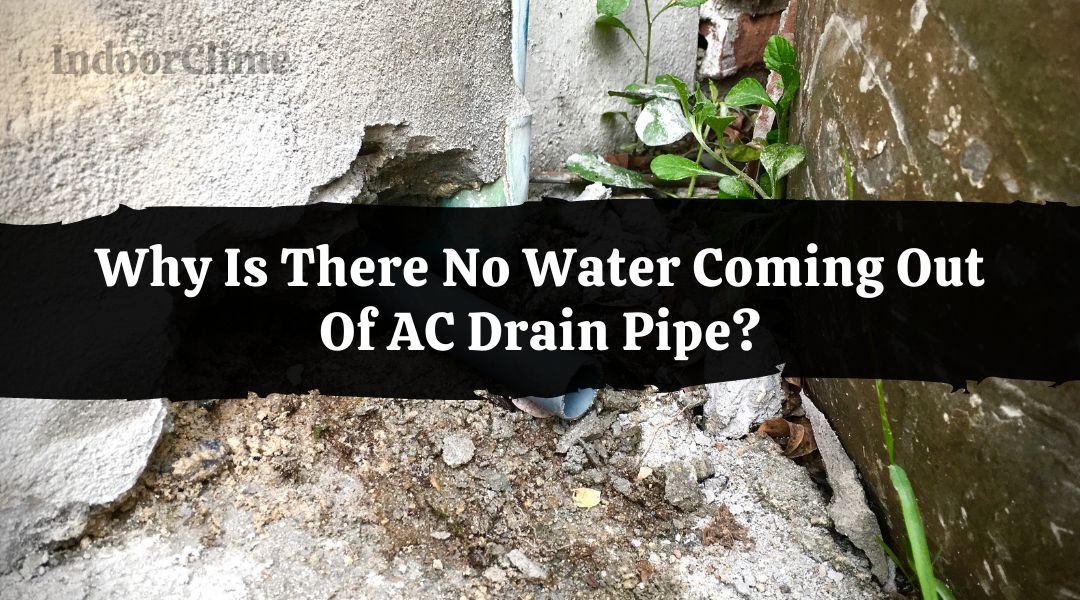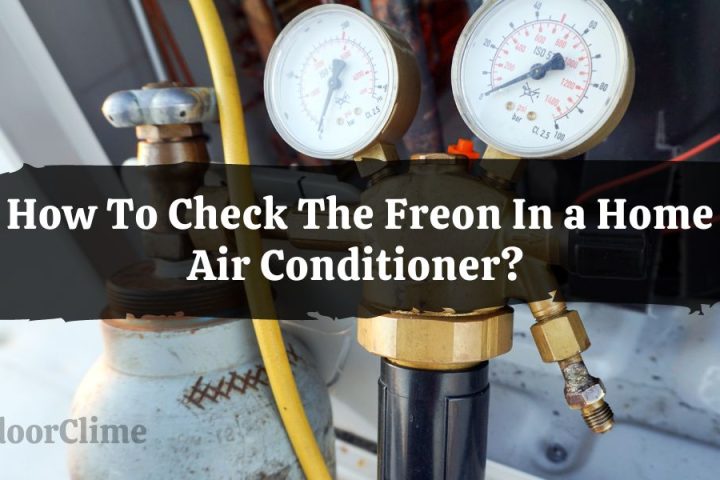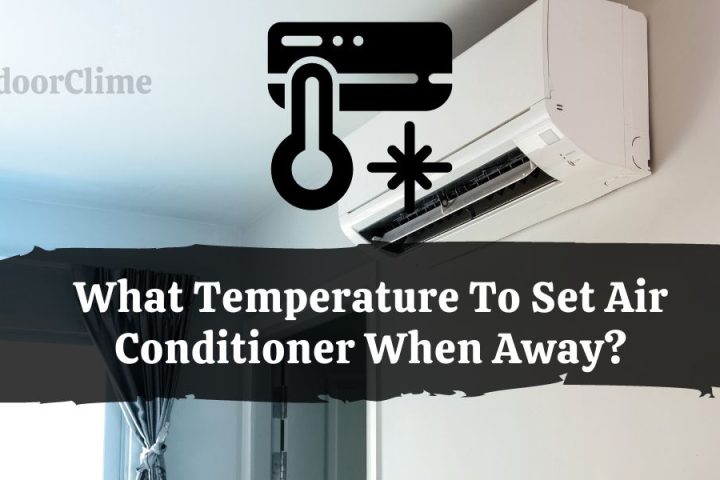Air conditioners are designed in a way that is easy to operate. Once our brand-new units are installed, we turn them on to keep our indoor spaces cool and cozy.
Yet, many homeowners do not have the technical knowledge to detect an issue quickly. For instance, why do you think no water is dripping from the drain pipe?
Clogged pipes, installation issues, or a failing drain pump can cause no water from the AC drain pipe.
In this article, I will share everything you need about drain pipes and what to do when your air conditioning system has difficulty draining water.
When Does Your Air Conditioner Drain Water?
If one part of your AC unit has problems, it will likely affect its performance.
To better understand how the AC drain works, let’s begin with the condensing unit found outside your house. You’ll find the compressor, condenser coils, fan, and other controls here.
When your air conditioner is switched on, the compressor pumps refrigerant to the evaporator coil. As this happens, the AC unit’s blower motor pulls warm air from your house.
Then, the warm air enters through the return vents and is directed to the evaporator coil, where the cool refrigerant absorbs the hot air and cools it.
The newly-cooled air is expelled through the supply vents and into your house.
At this point, the refrigerant becomes hot after absorbing the heat and humidity from your house. This hot refrigerant must travel back to the condensing unit to cool itself.
Here, the evaporator coil has ample surface area for heat transfer. But in the process, some humidity remains on the coil in the form of condensation.
The condensate then drips off into the drain pan. It is expelled from the air conditioning system and your house via the drain line.
Given the explanation above, here are the two other reasons why your AC unit drains water:
Hot Temperature

Increased indoor and outdoor temperatures can make your air conditioner drip water.
Your house can feel hotter even when the forecast tells otherwise. This can happen when you do a lot of cooking in your home. Consequently, your AC unit will drain more water.
In muggy weather, your AC unit will cool and remove more vapor. Once it is turned into water, it is released from your home through the drain.
Frozen Coils
Air filters catch the contaminants throughout the air conditioning process. That’s why it is essential to clean them regularly.
When the dirt builds up on these filters and is not removed, it will block the airflow at the evaporator coils and freeze them.
Once the ice melts, the drain pan cannot handle it. Hence, the water leakage.
Why Is No Water Coming Out Of My AC Drain Pipe?
Here are three possible reasons that could explain why no water is coming out from the drain pipe:
Congested Drain Line

Earlier, I explained that your AC unit expels the condensate on its evaporator coils through the AC drain pipe, naturally making them wet.
This moist pipe will make for the perfect breeding ground for algae. Besides this, it also accumulates debris like hairs, dust, and soil that managed to get into the AC system.
Installation problems
Incorrect installation can be why no water is coming out of the AC drain pipe.
If the drain pipe does not follow the slope angle requirements, the water might not be dripping. Likewise, installing a draining pipe of the wrong size can prevent your AC unit from discharging condensate.
Unfortunately, this is something that you cannot fix with any DIY hacks. Instead, you will need a technician to redo the installation.
Malfunctioning drain pump
Since many large air conditioning units come with built-in dehumidifiers, they remove gallons of water daily with the help of drain pumps. If the unit’s drain pump breaks, the drain line will not expel water.
Why Does My AC Drain Pipe Keep Clogging?
When the drain pipe is not cleaned regularly and thoroughly, algae, molds, and bacteria will grow inside your pipe.
On top of that, the water that drips from your air conditioner also carries contaminants like dirt and hair.
What Can I Do To Prevent A Condensate Drain Line Clog?

You need to remove the organisms that started growing in your drain line before they completely block the water that your AC needs to drain.
Here’s what you need to do:
- Switch off the AC unit and cut the power from the breaker.
- Find the drain pipe and remove the cap.
- Check if there is debris inside the drain. You can use a flashlight if you cannot see the blockage properly. Then, using a stiff brush, remove the debris you can find.
- Pour ¼ cup of distilled water into the pipe, and let it sit for half an hour.
- Use a wet or dry vacuum to suck out the remaining debris.
- Rinse the pipe and let it dry before replacing the cap.
How Do I Know My AC Drain Pipe Is Clogged?
Fortunately, you don’t need a licensed technician to know if your air conditioning unit’s drain pipe is jammed. Some newer models feature sensors that can alert you whenever there’s a problem.
If you own one of the older units, however, make sure to look for these signs:
- The air conditioning system would not switch on or shut down by itself.
- There is standing water near your AC’s indoor unit.
- The AC unit is unable to cool your house well enough.
- You notice a musty or moldy smell somewhere close to your vents.
- There is water damage around the vents or your AC unit.
What Should I Do If My AC Is Not Draining?

Regardless of whether your air conditioner is not draining water, it would help if you switched it off immediately. Otherwise, using it continuously may damage it further.
After turning off your AC, clean up any puddles of water or water damage surrounding your outdoor and indoor units, if any.
Next, look for the drain line and inspect for blockage. If you see anything obstructing the water flow, remove it by taking the steps I provided above.
What Happens When AC Doesn’t Drain?
If your AC unit cannot expel condensate, the water inside evaporates and elevates the humidity levels inside your house, which can be uncomfortable.
Moreover, the increased humidity can also cause molds and mildew to grow, posing health risks.
Another issue is the corrosion of your AC unit’s metal parts. This will eventually lead to expensive replacements and decrease the unit’s lifespan.
Large quantities of water in the drain pan can also damage your walls, floors, and anything within reach. That includes your electrical system.
Thus, draining water is an important part of the air conditioning process.
What Size Is AC Drain Pipe?

The requirements for air conditioning condensate drain installations in the United States can be found in your county’s local codes.
According to this document from Sacramento County’s Building Permits and Inspection Division, these are the AC drain pipe sizes:
- ¾ inch for up to 20 tons of refrigeration
- 1 inch over 20 tons to 40 tons of refrigeration
- 1 ¼ inch for 40 tons to 90 tons of refrigeration
- 1 ½ inches for 90 tons to 125 tons of refrigeration
- 2 inches for over 125 tons of refrigeration
How Often Should I Clean My AC Drain Pipe?
Checking and cleaning the drain pipe at least once or every other month can help keep your air conditioner in good condition.
Remember, the damages a clogged drain pipe causes are too costly, so don’t forget to do this.
Even though you’ve already invested a lot of money in an air conditioner, you can only make the most if you take care of it.
Indeed, there is a lot to remember when you’re learning how to clean and maintain your unit, but here’s the main takeaway of this article:
If you notice no water coming out of the air conditioner’s drain pipe, start investigating and try not to use the appliance as much as possible.
Remember that water that gets stuck somewhere in your air conditioning system often results in increased humidity, water-damaged walls, and many other problems.
But you can avoid this by addressing the issue sooner.





